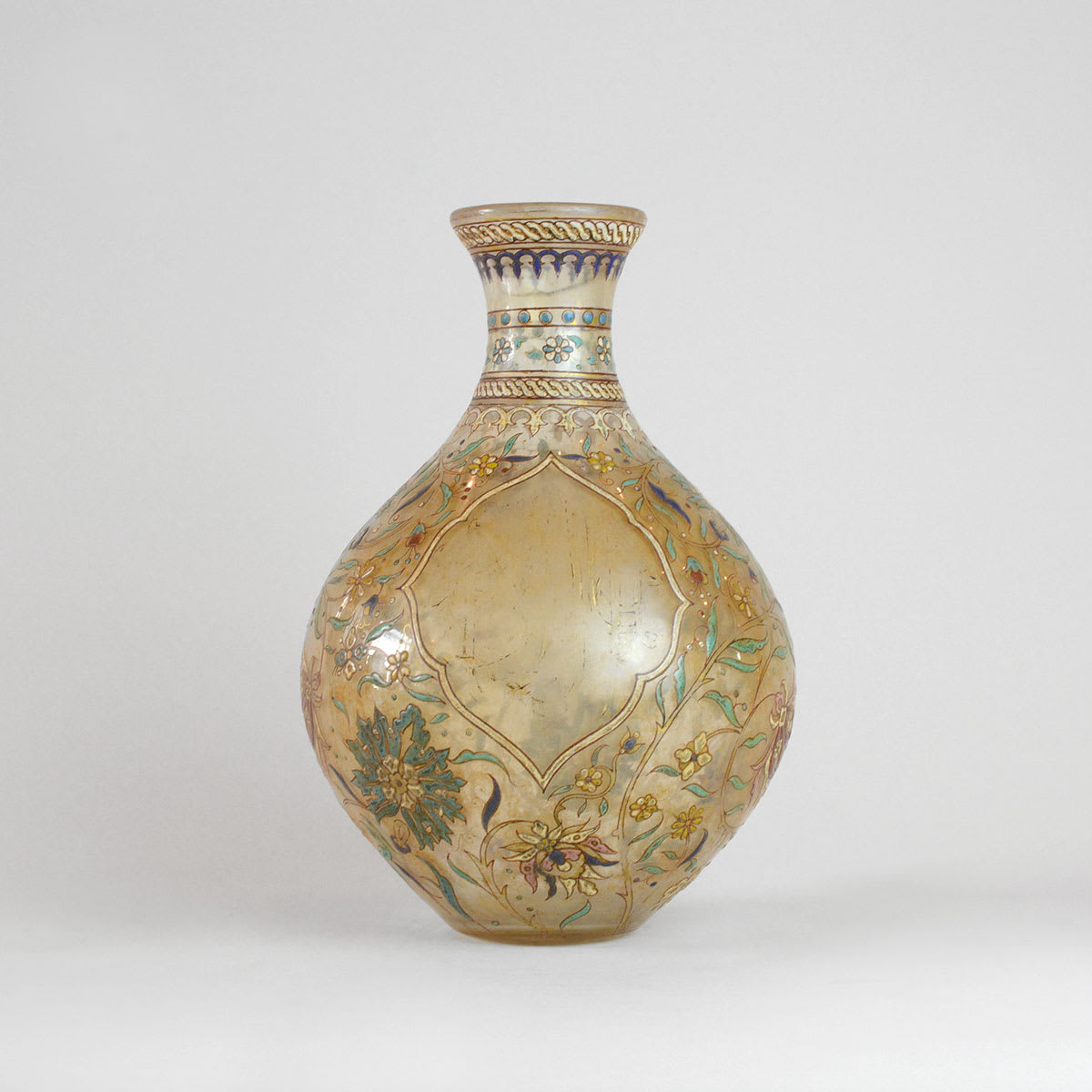Mamluk Glass Vase, 1250 CE - 1517 CE
Glass
height 26.7 cm
height 10 1/2 in
height 10 1/2 in
SP.185
Further images
The Mamluks controlled Egypt, Syria and Palestine between 1250 and 1517. ‘Mamluk’ literally means ‘owned’ and refers to the slave origins of this dynasty. Children from Turkish lands were recruited...
The Mamluks controlled Egypt, Syria and Palestine between 1250 and 1517. ‘Mamluk’ literally means ‘owned’ and refers to the slave origins of this dynasty. Children from Turkish lands were recruited at a young age and given military training. The advantage of this system under the Abbasids and later the Ayyubids was the creation of fighting force which owned its position directly to the central authorities. Over time however this military caste overthrew their former rulers and seized power for themselves. The geographical position of the Mamluk power base enabled them to control the trade between Europe and the East and as a result amass great wealth. Today the Mamluk sultans are remembered for their lavish patronage of the arts, including a taste for elaborate enamelled and gilded glass.
Enamelled glass is arguably the most celebrated type of glass from the Islamic world. The enamel was made from coloured opaque glass crushed into a powder and applied to the surface of the vessel in an oily medium with a brush or reed pen. In order to fix the colour permanently the glass had to be re-fired. This was an extremely complicated process because the temperature in the wood-fuelled kiln had to be carefully controlled. If it was too high there was risk of the vessel losing its shape. Scholars are still uncertain as to whether the different colours were all applied at the same time or in stages. Gilding was also added to the most luxurious vessels which were only used on special occasions.
The exact date of the invention of enamelled glass is unclear but its production took off in Syria in the twelfth century, especially in the glass workshops at Raqqa. In the thirteenth and fourteenth centuries the centre of production shifted to Cairo- the Mamluk capital. It was the painterly surface and variety of colours that really appealed to Mamluk patrons, many of whom had their names incorporated into the vessels’ design. Elaborate mosque lamps were a particular favourite of the royal establishment. For reasons that are not yet clear the trade fell into decline from the late fifteenth century and the lead in glass production shifted to European workshops, especially Venice.
This elegant vase has a globular body and a short flaring neck. The diamond shaped cartouche contains traces of gilding although the design has faded. The remainder of the body is covered with a scrolling floral and foliate design in blue, red, white and cream. This has been expertly executed with a close attention to detail. The neck features a stylised flower motif as well as several bands filled with geometric patterns. (AM)
Enamelled glass is arguably the most celebrated type of glass from the Islamic world. The enamel was made from coloured opaque glass crushed into a powder and applied to the surface of the vessel in an oily medium with a brush or reed pen. In order to fix the colour permanently the glass had to be re-fired. This was an extremely complicated process because the temperature in the wood-fuelled kiln had to be carefully controlled. If it was too high there was risk of the vessel losing its shape. Scholars are still uncertain as to whether the different colours were all applied at the same time or in stages. Gilding was also added to the most luxurious vessels which were only used on special occasions.
The exact date of the invention of enamelled glass is unclear but its production took off in Syria in the twelfth century, especially in the glass workshops at Raqqa. In the thirteenth and fourteenth centuries the centre of production shifted to Cairo- the Mamluk capital. It was the painterly surface and variety of colours that really appealed to Mamluk patrons, many of whom had their names incorporated into the vessels’ design. Elaborate mosque lamps were a particular favourite of the royal establishment. For reasons that are not yet clear the trade fell into decline from the late fifteenth century and the lead in glass production shifted to European workshops, especially Venice.
This elegant vase has a globular body and a short flaring neck. The diamond shaped cartouche contains traces of gilding although the design has faded. The remainder of the body is covered with a scrolling floral and foliate design in blue, red, white and cream. This has been expertly executed with a close attention to detail. The neck features a stylised flower motif as well as several bands filled with geometric patterns. (AM)











